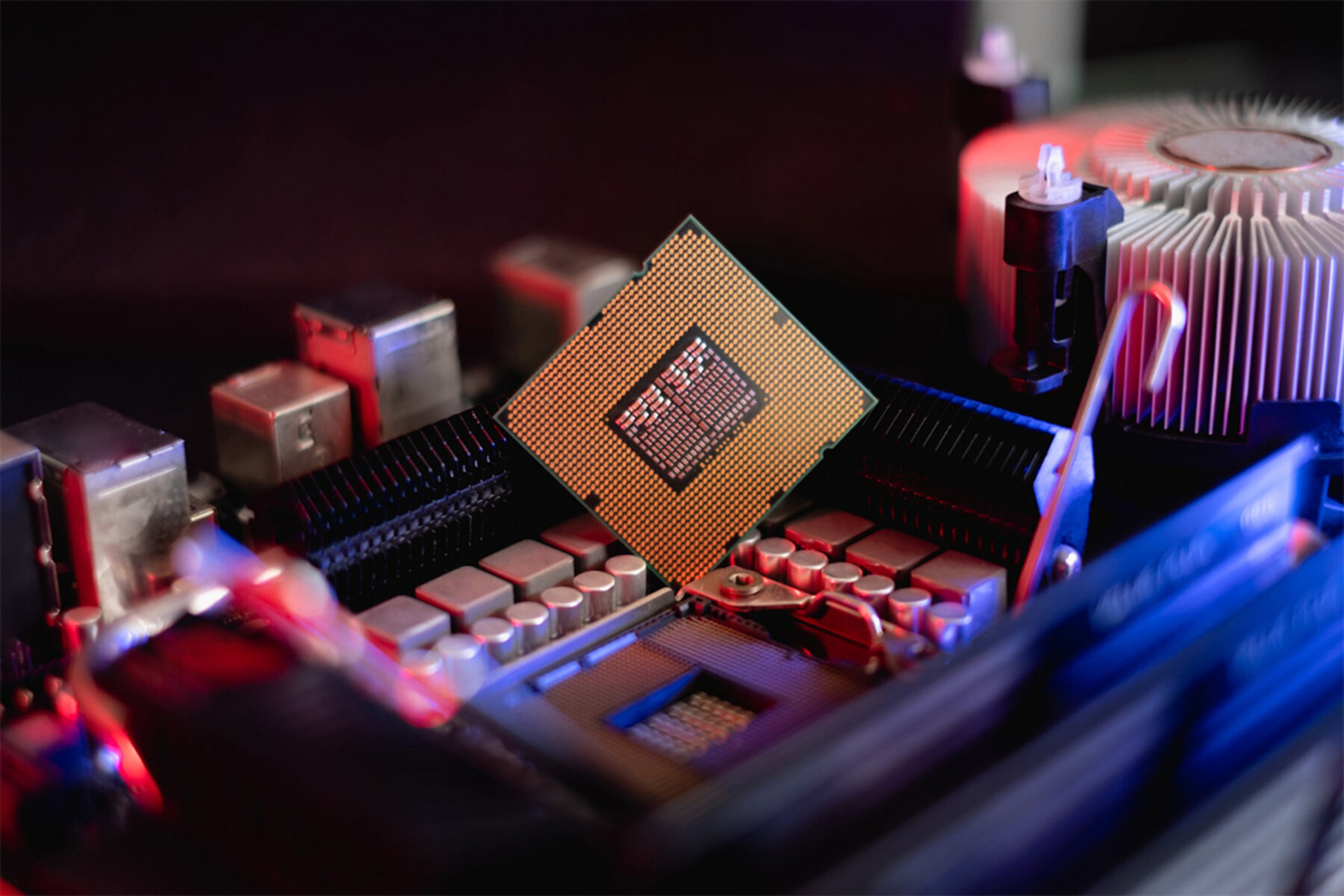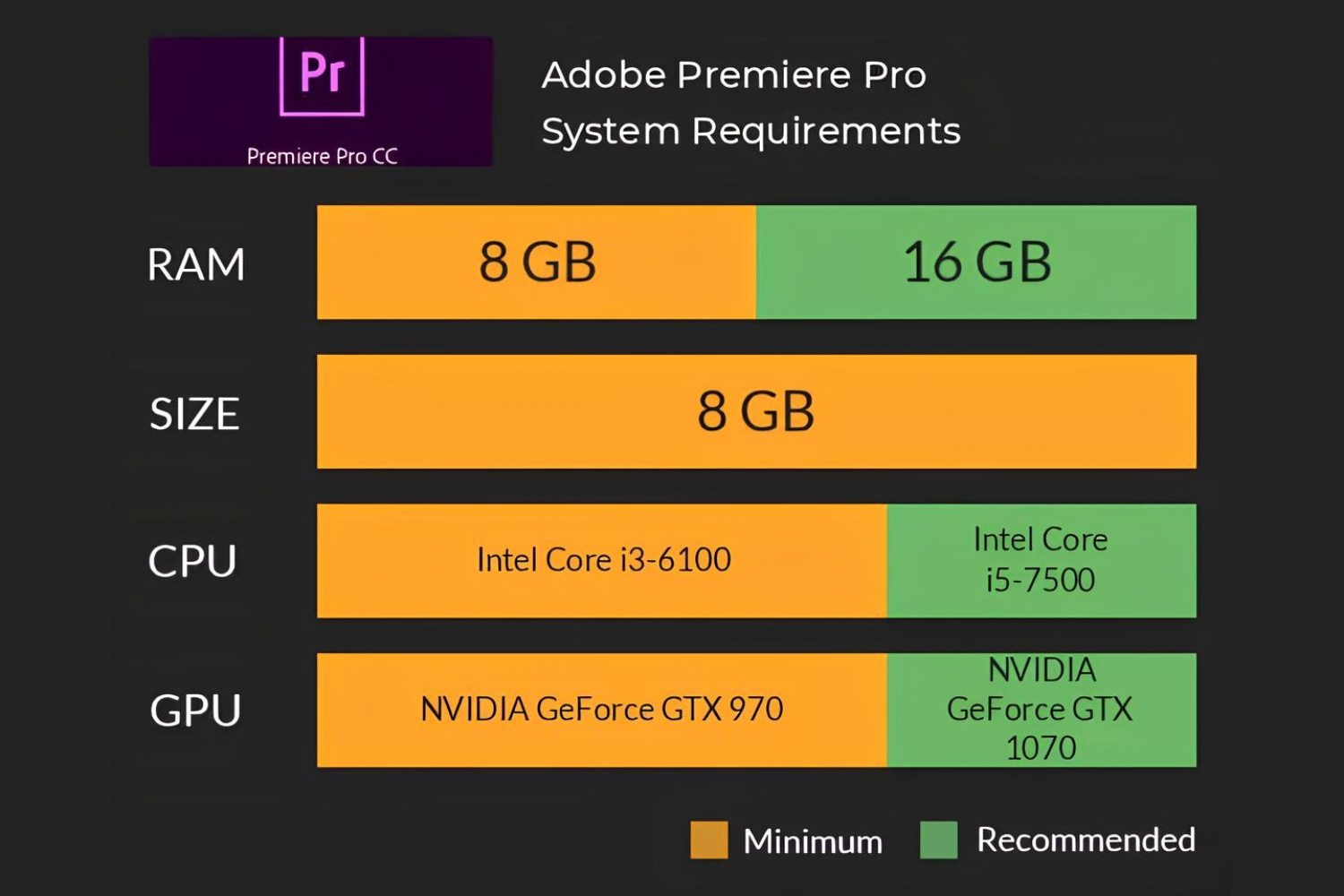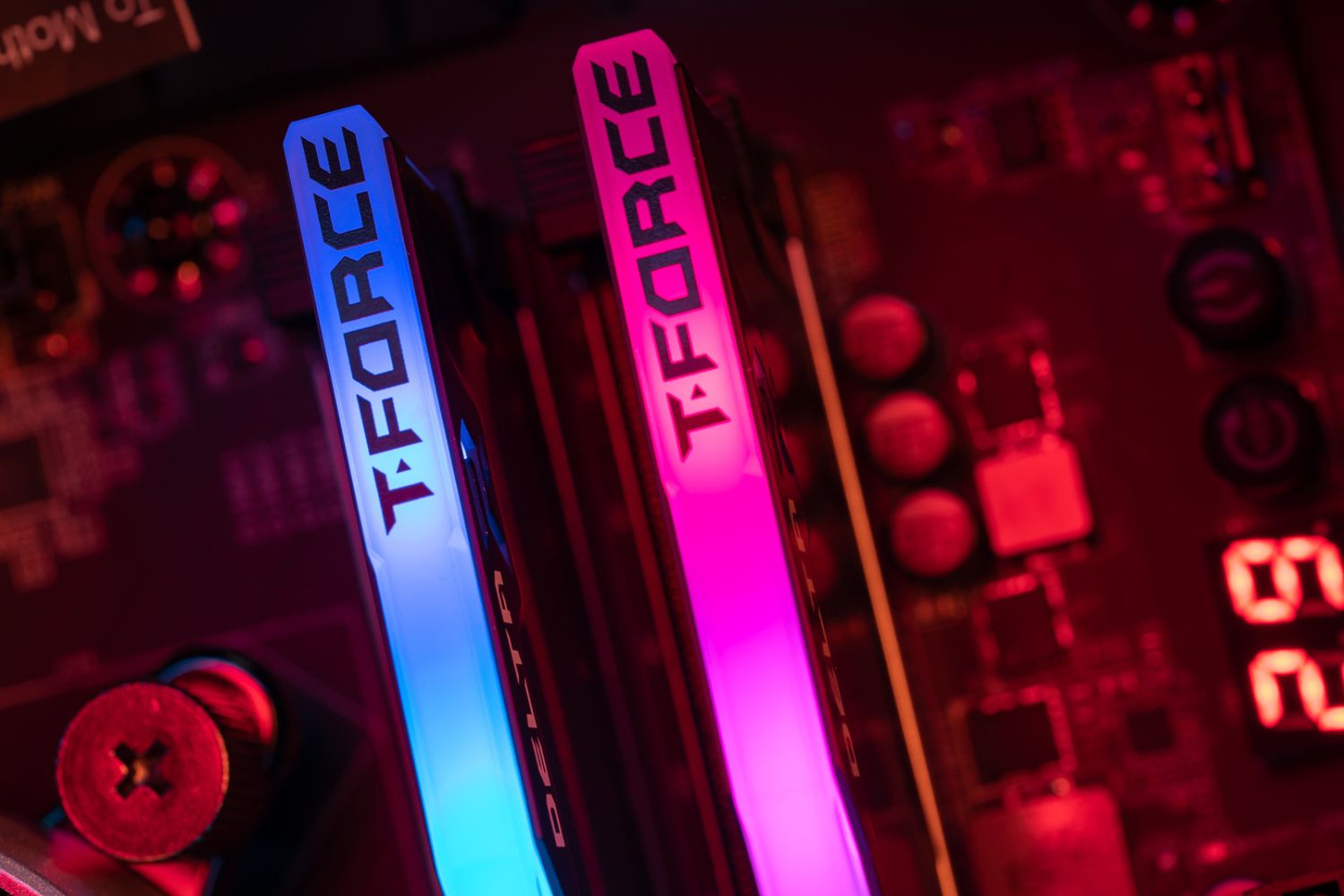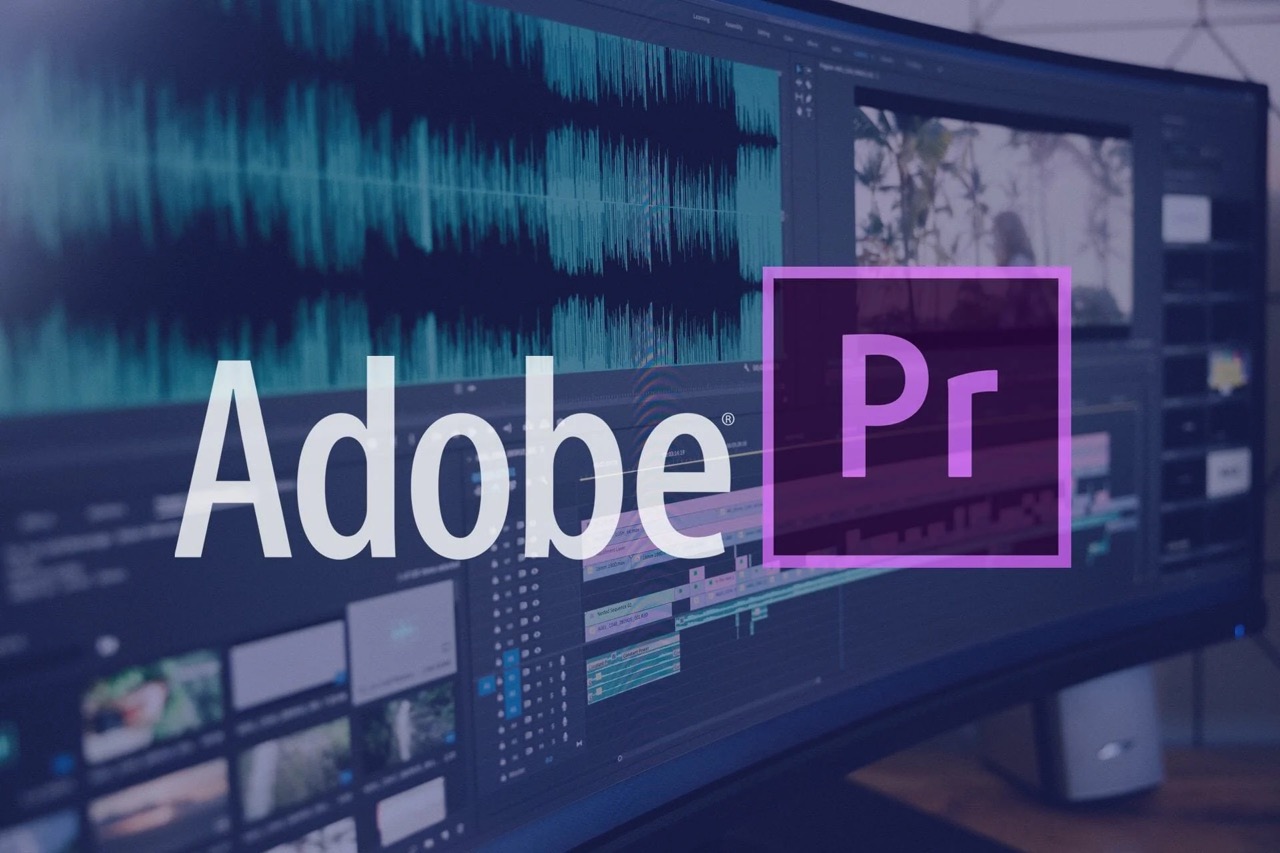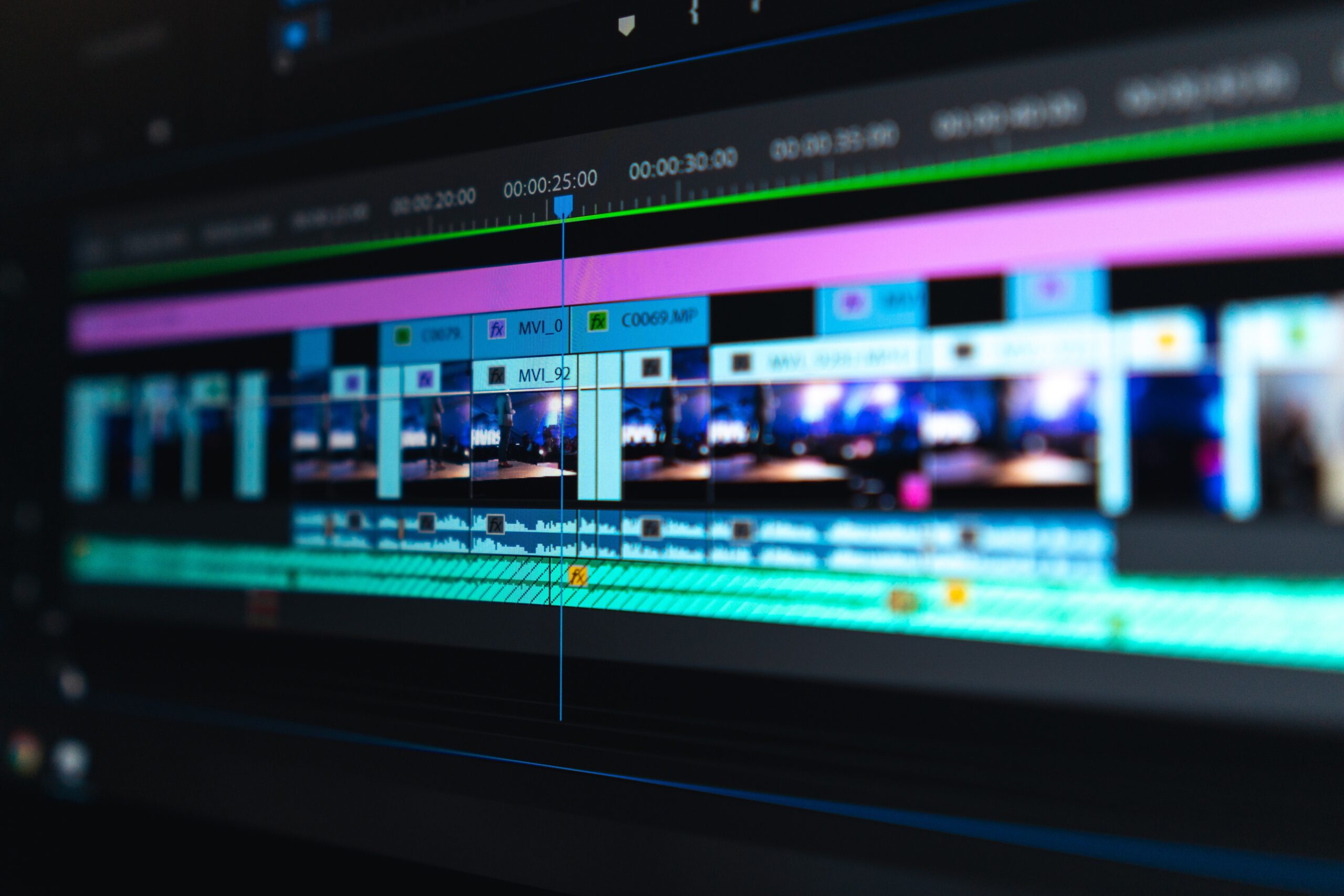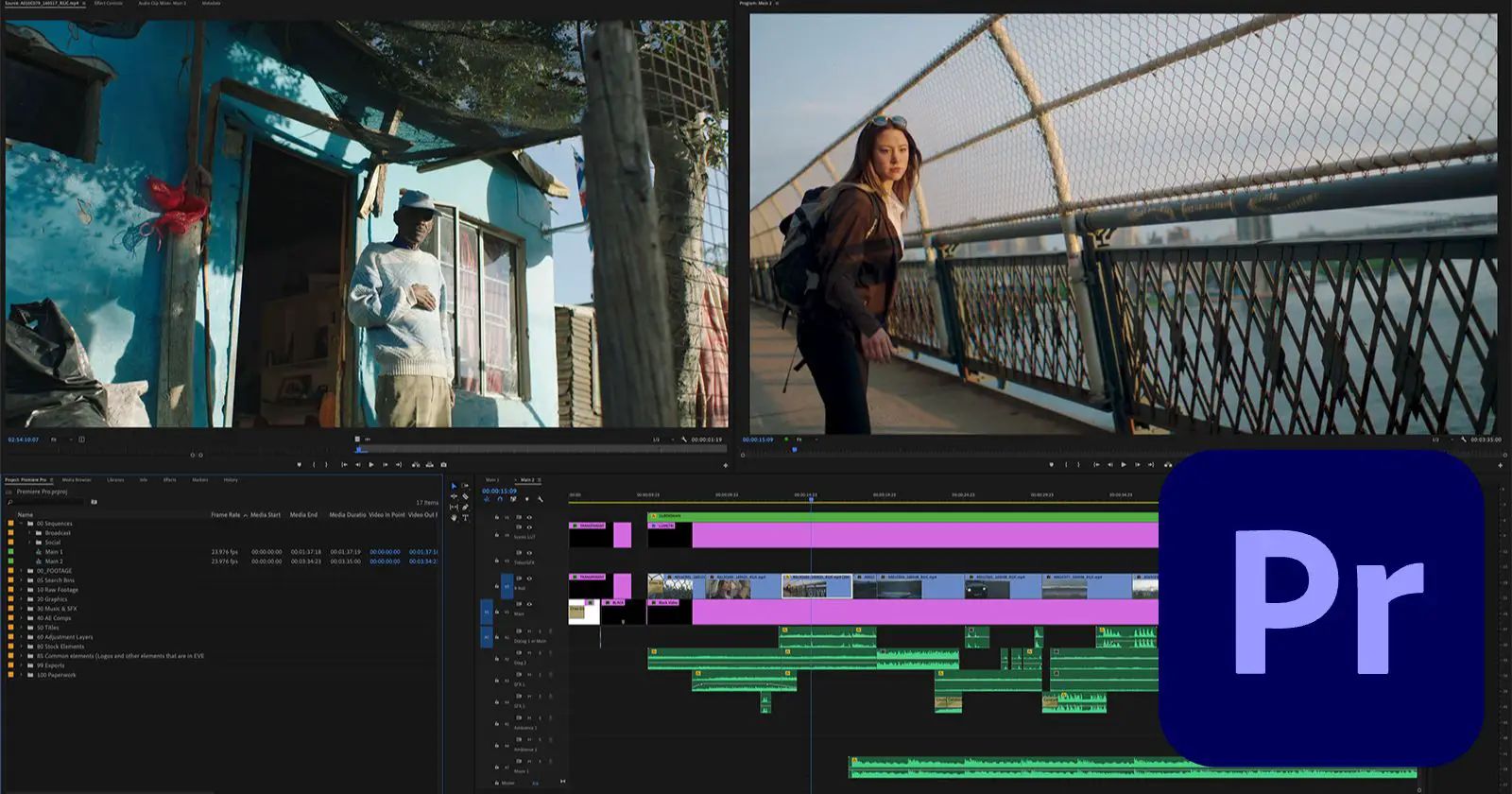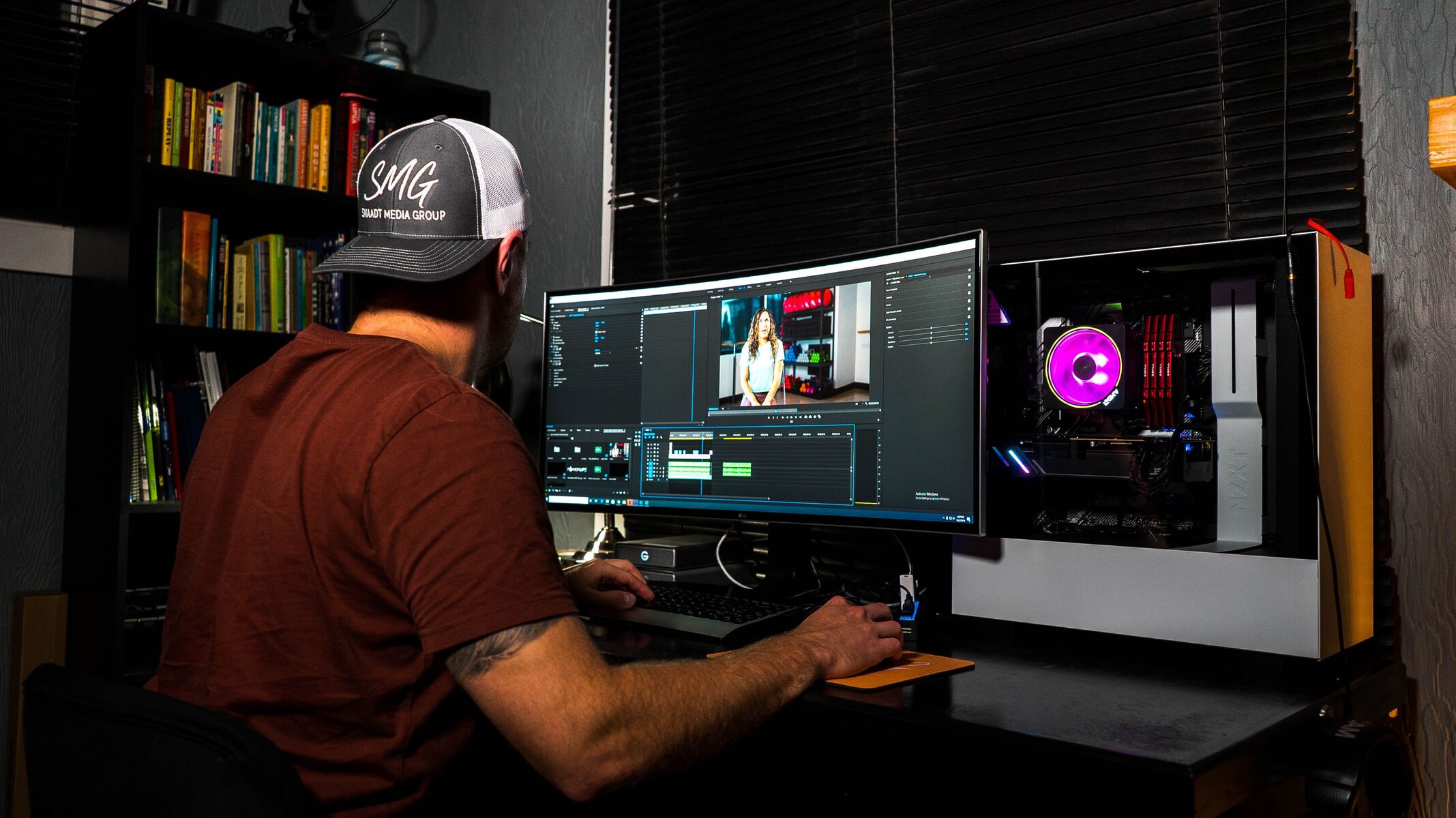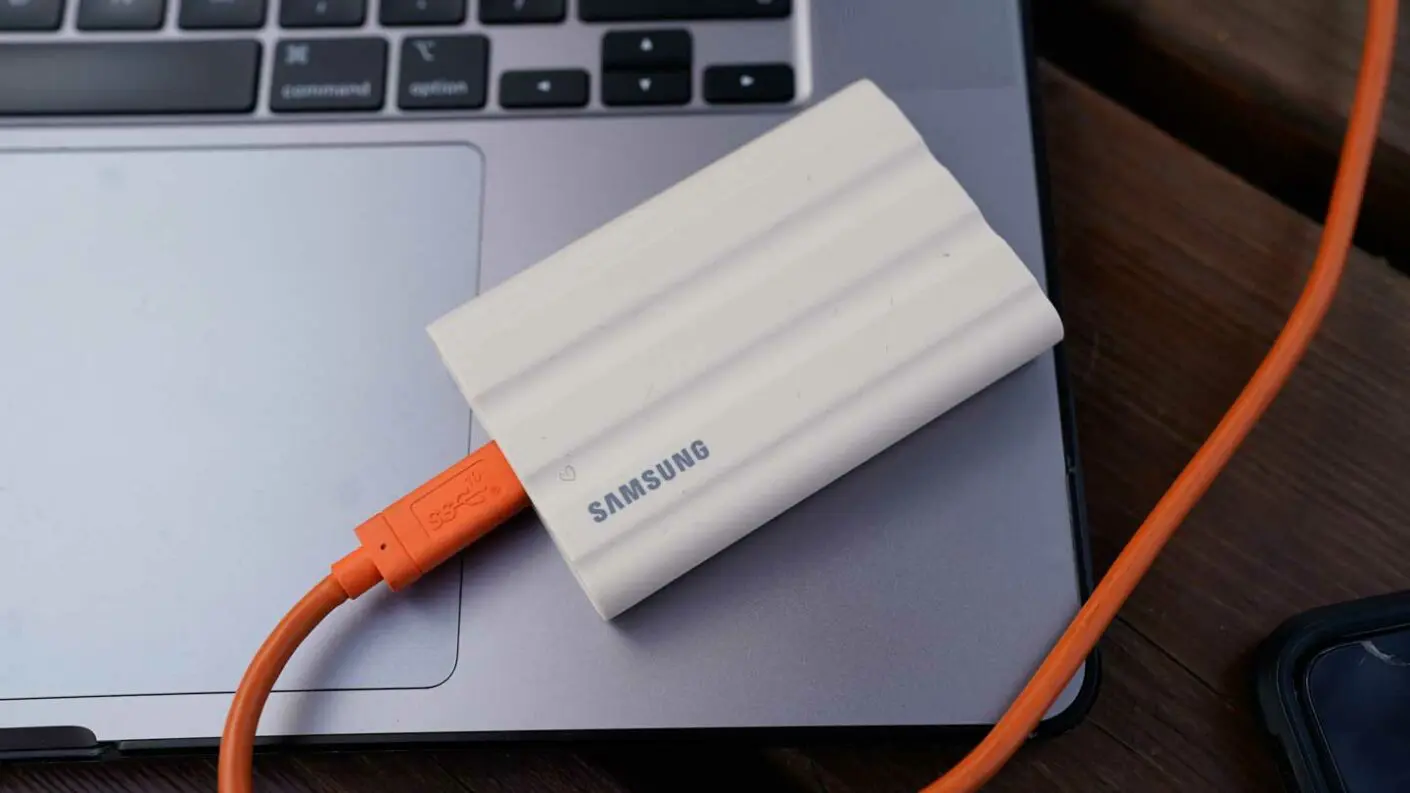Introduction
Adobe Premiere Pro is a leading video editing software used by professionals and enthusiasts alike. Whether you’re an aspiring filmmaker or a business owner creating promotional videos, having the right amount of RAM is crucial for a smooth and efficient editing experience. RAM, short for Random Access Memory, plays a vital role in handling the processing power required to seamlessly edit and render high-quality videos.
When working with complex video projects, such as those involving high-resolution footage, multiple layers, effects, and transitions, the demand for RAM increases significantly. Inadequate RAM can lead to slow rendering times, frequent crashes, and overall sluggish performance, hindering your editing workflow. To avoid these issues, it’s essential to understand the RAM requirements of Adobe Premiere Pro and ensure that your system meets or exceeds them.
Adobe provides system requirements for Premiere Pro, including RAM recommendations, to ensure an optimal user experience. However, it’s important to note that the recommended RAM configurations set by Adobe are based on average user scenarios. Depending on the complexity of your projects and your workflow, you may require more RAM than the minimum recommended.
In this article, we will delve into the factors that determine the amount of RAM needed for Adobe Premiere Pro, explore different RAM configurations for various types of projects, and provide tips for optimizing RAM usage. By understanding these concepts, you will be able to make informed decisions when it comes to upgrading your system’s RAM for enhanced video editing performance.
RAM and its Importance in Video Editing
Random Access Memory (RAM) is a critical component in video editing, and its role cannot be overstated. Unlike permanent storage devices like hard drives or SSDs, RAM is volatile and temporary, meaning it stores data that is actively being used by the system. When it comes to video editing, having sufficient RAM is crucial for several reasons.
Firstly, RAM directly impacts the overall performance and responsiveness of Adobe Premiere Pro. With an inadequate amount of RAM, the software may struggle to handle large video files, resulting in slow and cumbersome editing processes. Insufficient RAM can lead to lags, freezing, and crashes, significantly hampering your productivity.
Furthermore, RAM plays a crucial role in the smooth playback of video clips and real-time previewing of edits. With enough RAM, you can seamlessly view and edit high-resolution footage, apply effects, and navigate through the timeline without any noticeable delays. This enables you to make precise edits and adjustments, ensuring the final video meets your creative vision.
In addition to playback and editing capabilities, RAM also affects the efficiency of rendering and exporting video projects. When you export a video in Adobe Premiere Pro, the software processes and compresses the raw video data into the final output file format. The speed at which this process occurs is greatly influenced by the amount of available RAM. Sufficient RAM allows for faster rendering times, reducing the waiting period when exporting your projects.
Another benefit of having ample RAM is the ability to multitask efficiently. While working on video editing projects, you might need to have multiple other applications running simultaneously, such as graphic design software, audio editing tools, or web browsers for research. Sufficient RAM ensures that all these applications can run smoothly in the background without impacting the performance of Adobe Premiere Pro.
It’s worth noting that video editing workflows have become increasingly resource-intensive over the years. Higher resolutions, complex visual effects, and demanding color grading techniques all contribute to a greater need for RAM. Therefore, even if you currently have enough RAM for your specific projects, it can be advantageous to have some headroom for future growth and to accommodate more demanding editing tasks.
In the next section, we will explore the specific factors that determine the amount of RAM required for Adobe Premiere Pro, helping you make an informed decision when it comes to upgrading your system’s RAM.
Understanding Adobe Premiere Pro’s System Requirements
Before delving into the specific RAM requirements for Adobe Premiere Pro, it’s essential to understand the system requirements outlined by Adobe. These requirements serve as a guideline to ensure optimal performance and stability when using the software.
Adobe provides minimum and recommended system requirements for Premiere Pro, which include specifications for the processor, graphics card, storage, and RAM. While meeting the minimum requirements allows the software to run, it may not provide the ideal performance for complex video editing tasks.
In terms of RAM, Adobe recommends a minimum of 8GB for basic editing tasks. However, if you work with larger video files, multiple high-resolution clips, or advanced effects, it is advisable to have a higher amount of RAM. As a general rule of thumb, 16GB or more of RAM is recommended for smoother editing experiences.
It’s important to note that the RAM recommendations provided by Adobe are based on average user scenarios. The ideal amount of RAM, however, can vary depending on several factors, including the complexity of your projects, the size and resolution of your video files, and the effects and plugins you use.
In addition to RAM, other hardware components, such as the processor and graphics card, also play a significant role in Premiere Pro’s performance. A powerful processor with multiple cores and high clock speeds can handle complex editing tasks more efficiently. Similarly, a dedicated graphics card with plenty of video memory can accelerate rendering and playback performance.
Aside from hardware requirements, the version of Premiere Pro you are using may also impact the RAM requirements. Newer versions often introduce additional features and improvements that might require more resources. Therefore, it’s advisable to check the system requirements specific to the version of Premiere Pro you are using to ensure optimal performance.
In summary, understanding Adobe Premiere Pro’s system requirements is essential to ensure that your system meets the minimum specifications for running the software. However, for smoother editing experiences and better performance, it is recommended to exceed the minimum RAM requirements and consider factors such as the complexity of your projects and additional hardware specifications.
Factors that Determine the Amount of RAM Required for Adobe Premiere Pro
When it comes to determining the amount of RAM required for Adobe Premiere Pro, several factors come into play. Understanding these factors will help you gauge the optimal amount of RAM for your specific editing needs. Let’s explore some of the key factors:
1. Project Complexity: The complexity of your projects has a significant impact on the amount of RAM needed. Projects with multiple video tracks, layers, effects, and transitions require more RAM to handle the increased processing load. If you frequently work on complex projects, consider having a higher amount of RAM to ensure smooth editing and rendering.
2. Resolution and Codec: The resolution and codec of your video files also affect the RAM requirements. High-resolution footage, such as 4K or even 8K, demands more memory to process and edit. Additionally, using codecs that are highly compressed or resource-intensive will also require more RAM to decode and playback the footage in real-time.
3. Effects and Plugins: Applying effects and using plugins can increase the RAM requirements. Some effects, like motion tracking or color grading, can be particularly RAM-intensive. If you frequently use resource-heavy effects or plugins, it’s advisable to have more RAM to accommodate their processing needs.
4. Number of Active Programs: Running multiple programs simultaneously while working in Premiere Pro can increase the amount of RAM required. For example, if you have other resource-intensive applications, such as After Effects or Photoshop, open at the same time, it will consume more RAM. Ensure that you have sufficient RAM to support the memory needs of all the active programs.
5. Multi-Tasking: If you often perform tasks like rendering or exporting videos in the background while continuing to work on other editing tasks, additional RAM is beneficial. This enables smooth multi-tasking and prevents any lag or slowdown in performance while simultaneously handling multiple processes.
It’s important to note that these factors may vary from project to project. Therefore, it’s recommended to assess your typical editing workflows and consider the factors mentioned above to determine the ideal amount of RAM for your needs. Allocating more RAM than the minimum requirements can provide a buffer, ensuring optimal performance and reducing the risk of encountering slowdowns or system crashes during demanding editing tasks.
Recommended RAM Configurations for Different Types of Projects
When it comes to selecting the right RAM configuration for your Adobe Premiere Pro projects, it’s important to take into account the specific type and complexity of the projects you typically work on. While the minimum RAM requirements provided by Adobe serve as a starting point, having more RAM can improve performance and responsiveness. Here are some recommended RAM configurations based on different project types:
1. Basic Editing: If you primarily work on simple editing projects involving lower resolution video files and minimal effects, a minimum of 16GB of RAM should suffice. This configuration provides enough headroom for smooth playback, basic transitions, and minor color grading adjustments.
2. Standard Projects: For projects that involve moderate complexity, such as multiple video tracks, layered effects, and higher resolution footage (e.g., 1080p or 2K), it is recommended to have 32GB of RAM. This configuration allows for faster rendering, improved real-time playback, and efficient handling of effects and transitions.
3. Complex Projects: If you frequently work on demanding projects with high-resolution footage (e.g., 4K or higher), extensive effects, complex animations, and intricate color grading, it is advisable to have a minimum of 64GB of RAM. This configuration ensures smooth editing and enables faster rendering of complex sequences.
4. Multi-Tasking and Resource-Intensive Workflows: If you often run multiple resource-intensive applications alongside Premiere Pro or switch between editing and rendering/exporting tasks frequently, it’s recommended to have 64GB or more of RAM. This configuration allows for smooth multi-tasking and prevents any performance bottlenecks caused by limited memory resources.
Remember, these recommended RAM configurations are general guidelines and should be adjusted based on your specific workflow and hardware specifications. It’s crucial to assess your typical editing projects and consider factors such as resolution, effects, and multi-tasking requirements to determine the optimal amount of RAM for your needs.
Additionally, keep in mind that upgrading your RAM is not the only solution to improve performance. Other hardware components, such as the processor and graphics card, also play a significant role. It’s advisable to have a well-rounded system with balanced hardware specifications to ensure optimal performance in Adobe Premiere Pro.
In the next section, we will explore the impact of RAM on performance and processing speed, further highlighting the importance of having adequate RAM for video editing tasks.
The Impact of RAM on Performance and Processing Speed
RAM plays a crucial role in determining the performance and processing speed of Adobe Premiere Pro. Having adequate RAM can significantly enhance your editing experience and improve overall efficiency. Let’s examine the various ways in which RAM impacts performance:
1. Responsive Editing: Sufficient RAM allows for smoother and more responsive editing. When working on projects with multiple video tracks, effects, and transitions, RAM stores the necessary data for quick access. This enables seamless playback, efficient scrubbing through the timeline, and faster response to editing commands, ensuring a fluid editing experience.
2. Real-Time Preview: RAM directly affects the ability to preview your edits in real-time without any lag. As you apply effects, make color adjustments, or add transitions, Premiere Pro needs to process and render the changes on-the-fly. With enough RAM, the software can cache these changes, enabling smooth and instantaneous playback of your edits.
3. Accelerated Rendering: RAM has a significant impact on rendering and exporting times. When you render a video in Premiere Pro, RAM acts as a working space for the software to process and compress the raw video data. Insufficient RAM can lead to longer rendering times, whereas having enough RAM allows for faster processing, ensuring quick and efficient export of your projects.
4. Stability and System Performance: Insufficient RAM can result in system crashes, freezes, and overall instability when working with resource-intensive projects. When RAM is overwhelmed, the system starts relying on virtual memory (disk space allocated as an extension of RAM), which is significantly slower. This leads to sluggish performance and reduced editing efficiency. Adequate RAM ensures that your system operates within its optimal capacity, providing stability and preventing performance bottlenecks.
It’s important to note that the impact of RAM on performance is not linear. While additional RAM beyond the minimum requirements can result in performance improvements, there comes a point of diminishing returns. The specific performance gains will vary based on your system configuration and the complexity of your projects.
By having enough RAM, you can also allocate more memory to Premiere Pro, allowing the software to operate with larger cache sizes. This further enhances performance by minimizing the need for frequent data transfers between the RAM and the disk, resulting in faster access to the necessary information during editing tasks.
Ultimately, the impact of RAM on performance and processing speed in Adobe Premiere Pro cannot be overlooked. As you upgrade your hardware and optimize your software settings, ensuring that your system has sufficient RAM is a crucial step towards maximizing your video editing capabilities.
Upgrading and Allocating RAM for Adobe Premiere Pro
If you find that your current RAM configuration is limiting your editing capabilities in Adobe Premiere Pro, upgrading and allocating more RAM can significantly improve performance. Here are some steps to guide you through the process:
1. Check System Compatibility: Before upgrading your RAM, ensure that your system is compatible with the desired RAM modules. Check your motherboard specifications and determine the maximum amount of RAM it can support, as well as the type and speed of RAM modules compatible with your system.
2. Decide on the Amount of RAM: Assess your editing needs and the factors discussed earlier, such as project complexity and resolution. Based on these considerations, determine the amount of RAM you will need to upgrade to. It’s generally recommended to have a minimum of 16GB for smooth editing, but for more demanding workflows, 32GB or even 64GB may be necessary.
3. Purchase and Install the RAM: Once you have determined the required RAM configuration, purchase the appropriate RAM modules. Ensure that you buy RAM from reputable manufacturers that provide reliable performance. Follow the installation instructions provided with the RAM modules, making sure to power off your system and handle the modules with care to avoid static electricity damage.
4. Allocate RAM in Premiere Pro: After installing the new RAM, it’s important to allocate the RAM within Premiere Pro to take advantage of the additional memory. Open Premiere Pro and go to the “Edit” menu, then select “Preferences” > “Memory”. In the Memory preferences, adjust the “RAM reserved for other applications” slider to allocate the desired amount of RAM to Premiere Pro. Allocating around 75-80% of the available RAM is generally recommended, leaving some space for other applications running in the background.
5. Optimize Premiere Pro settings: To further optimize RAM usage, you can customize additional settings in Premiere Pro. Under the “Memory” preferences, you can adjust the “RAM reserved for background processing” to allocate more RAM for rendering and exporting processes. You can also increase the “Maximum Render Quality” option for better results, although this may require more RAM during rendering.
6. Monitor Performance: After upgrading and allocating the new RAM, monitor the performance of Premiere Pro during editing tasks. Pay attention to how the software handles playback, rendering, and exporting. If you notice significant improvements in responsiveness and processing speed, you have successfully upgraded and optimized your RAM configuration.
Remember, upgrading RAM is just one aspect of improving performance in Premiere Pro. To fully optimize your editing experience, ensure that your system meets or exceeds the recommended hardware specifications, including the processor, graphics card, and storage devices. Regularly update your software and drivers to take advantage of the latest performance enhancements as well.
Tips for Optimizing RAM Usage in Adobe Premiere Pro
Optimizing RAM usage in Adobe Premiere Pro is crucial to ensure smooth performance and efficient editing. By implementing the following tips, you can maximize the utilization of your system’s RAM and further enhance your editing experience:
1. Close Unnecessary Applications: Before launching Premiere Pro, close any unnecessary applications running in the background. This helps free up memory for Premiere Pro to utilize and prevents RAM from being consumed by other programs.
2. Trim Down Media Cache: Premiere Pro creates a cache of rendered and optimized media files to improve playback performance. However, this cache can consume a significant amount of RAM. Regularly clean up your media cache by going to the “Preferences” > “Media Cache” settings and selecting the “Delete Unused” option. This helps free up space in RAM and improves overall system performance.
3. Optimize Project Settings: When creating a new project in Premiere Pro, pay attention to project settings such as sequence settings and video previews. Choosing appropriate settings, such as matching the sequence resolution and frame rate to your footage, minimizes the need for additional RAM usage and ensures smooth playback.
4. Use Proxy Workflow: Utilize Premiere Pro’s proxy workflow feature to create lower resolution or compressed versions of your footage for editing purposes. By editing with proxy files, you can significantly reduce the RAM requirements for playback and editing, especially when working with high-resolution media.
5. Limit the Use of Live Previews: Live previews, such as waveform or histogram displays, can consume additional RAM. Consider disabling these live preview options if they are not critical to your editing process. You can do this by going to the “Preferences” > “Audio” or “Video” settings and disabling specific waveform or histogram options.
6. Trim Unused Clips and Effects: Remove any unused clips or effects from your timeline to minimize the amount of data stored in RAM. This not only saves memory but also improves overall project organization and speeds up editing processes.
7. Optimize Export Settings: When exporting your project, optimize the settings to reduce the strain on RAM. Choose appropriate export formats and consider adjusting the bitrate or quality settings to strike a balance between file size and processing demands. This reduces the amount of data that needs to be processed and helps speed up the export process.
8. Regularly Update Premiere Pro: Adobe regularly releases updates and performance enhancements for Premiere Pro. Stay up to date with the latest versions to take advantage of these improvements, including optimized RAM usage and overall system stability.
By implementing these tips, you can optimize RAM usage in Adobe Premiere Pro, allowing for smoother editing, faster rendering, and improved overall performance.
Conclusion
RAM plays a critical role in the performance and efficiency of Adobe Premiere Pro. Having the right amount of RAM ensures smooth editing, faster rendering, and improved overall system stability. Understanding Adobe Premiere Pro’s system requirements, considering factors that influence RAM requirements, and optimizing RAM usage are essential steps towards achieving the best editing experience.
When it comes to selecting the appropriate RAM configuration, it’s important to consider the complexity of your projects, the resolution and codec of your video files, and the effects and plugins you use. While Adobe provides minimum RAM recommendations, it’s often advisable to have more RAM to accommodate resource-intensive tasks and future growth.
Upgrading and allocating RAM is a viable solution to enhance Adobe Premiere Pro’s performance. By ensuring compatibility, determining the desired amount of RAM, and following proper installation procedures, you can take full advantage of the increased memory capacity. The allocated RAM within Premiere Pro can be adjusted to maximize its utilization and improve editing efficiency.
Additionally, optimizing RAM usage involves implementing practices such as closing unnecessary applications, trimming down the media cache, and utilizing proxy workflows. By following these tips, you can further optimize RAM utilization and enhance overall system performance.
In summary, RAM is an invaluable resource in video editing, and having sufficient RAM is paramount for a seamless and efficient editing experience in Adobe Premiere Pro. By understanding the system requirements, upgrading and allocating RAM appropriately, and optimizing RAM usage, you can unlock the full potential of Premiere Pro and elevate your video editing capabilities.









